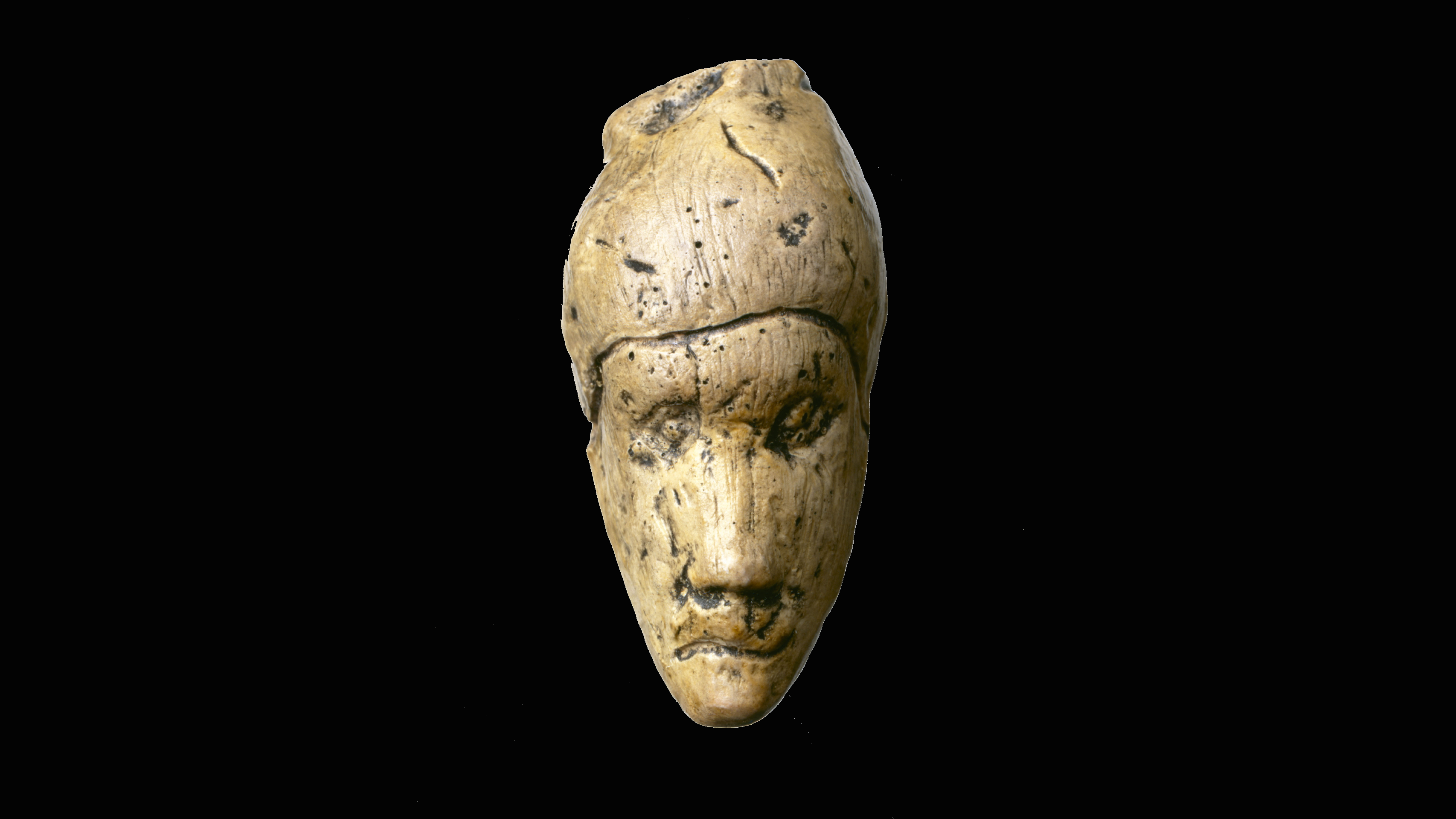
Name: Dolní Vĕstonice Portrait Head
What it is: A face carved out of mammoth ivory
Where it is from: The South Moravian region of the Czech Republic
When it was made: About 24000 B.C.
What it tells us about the past:
This sculpture, discovered at the archaeological site of Dolní Vĕstonice in the Czech Republic in the 1920s, is considered the oldest surviving portrait of a person anywhere in the world, at 26,000 years old.
Carved with stone tools out of mammoth ivory, the tiny head measures just 1.9 inches (4.8 centimeters) tall and 1 inch (2.4 cm) wide. The sculpture appears to represent a woman's face, with engraved eyes, a dimpled chin, and a raised nose and mouth. She may be wearing her hair in an updo or under a hat. Unlike other objects from the site — such as the Venus of Vĕstonice, which lacks facial features — this face seems to be individualized, making it the earliest known depiction of a specific person.
During the Upper Paleolithic period, a band of mammoth hunters set up camp at Dolní Vĕstonice, which is now a small village near the southern border of the Czech Republic. This cluster of settlements, sometimes called the "Stone Age Pompeii," has yielded tens of thousands of ceramics, stone tools and bone objects over the past century of excavations, along with numerous burials.
In one of these burials, covered in red ocher and arrayed with 10 drilled fox teeth, excavators discovered the skeleton of a middle-aged woman in 1949. Her skull was asymmetrical, potentially due to a traumatic childhood injury. When researchers used forensic techniques to reconstruct the woman's face from the skull in 2018, they discovered it was very similar to the tiny ivory carving, whose left eye is significantly smaller than the right.
Dolní Vĕstonice is unique in Europe for its abundant artifacts dating to the Late Gravettian period (29000 to 24000 B.C.), including some of the earliest kiln-fired pottery in the world, so it is unsurprising that this little head carved from mammoth ivory is likely the earliest personal portrait in the world.
Many artifacts from Dolní Vĕstonice, including this sculpted head, can be found on display at the Anthropos Pavilion, a museum in Brno, Czech Republic.




!["[T]he First and Fifth Amendments Require ICE to Provide Information About the Whereabouts of a Detained Person"](https://images.inkl.com/s3/publisher/cover/212/reason-cover.png?w=600)


